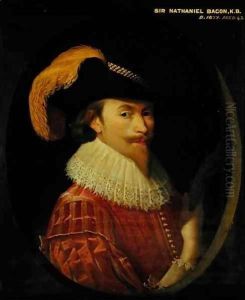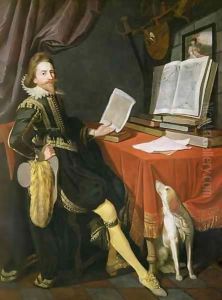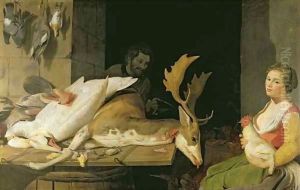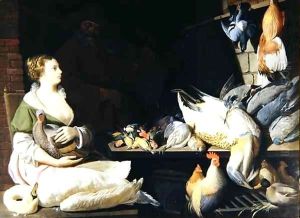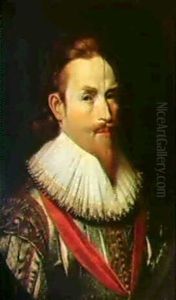Sir Nathaniel Bacon Paintings
Sir Nathaniel Bacon was an English painter and landowner who lived during the late Elizabethan and early Jacobean periods. He was born in 1585 at Friston Hall in Suffolk, England, into a prominent family; he was the second son of Sir Nicholas Bacon, the Lord Keeper of the Great Seal, and his second wife, Anne (née Butts). His half-brother was the famous philosopher and statesman Sir Francis Bacon. Despite his notable lineage, Nathaniel is remembered not for his political contributions but for his artistic endeavours.
Bacon's education included a period of study abroad, which was typical for young men of his status at the time. He attended Trinity College, Cambridge, and subsequently travelled to the continent, where he may have received training in painting. His work as a painter was unique for an English gentleman of his standing, as most did not engage in the arts professionally. Bacon focused on still lifes and landscapes, genres that were not commonly pursued by English artists until the later 17th century, making his work particularly forward-looking for its time.
As a landowner, Bacon was also known for his progressive approach to agriculture, and he used his estates to experiment with new farming techniques. He married Jane Meautys in 1614 and lived at Culford in Suffolk, where he devoted a significant amount of time to his garden and estate, which served as a subject for some of his paintings.
Bacon's artistic output was relatively small, and only a few of his paintings survive today. His most famous works include 'Cookmaid with Still Life of Vegetables and Fruit' (c. 1620–25), which is an early example of a genre scene combined with still life, and it is now held at Tate Britain in London. This painting, along with others, demonstrates Bacon's keen observation of nature and his skill in rendering texture and colour with a high degree of realism.
Sir Nathaniel Bacon died in 1627, leaving behind a body of work that has been valued for its unique place in the development of English painting. His art is representative of the shift towards a more naturalistic and secular approach to subjects, which would become more prevalent in English art over the coming centuries. His contributions, though limited in number, have been appreciated by art historians for their quality and the insight they offer into the art and culture of his time.
